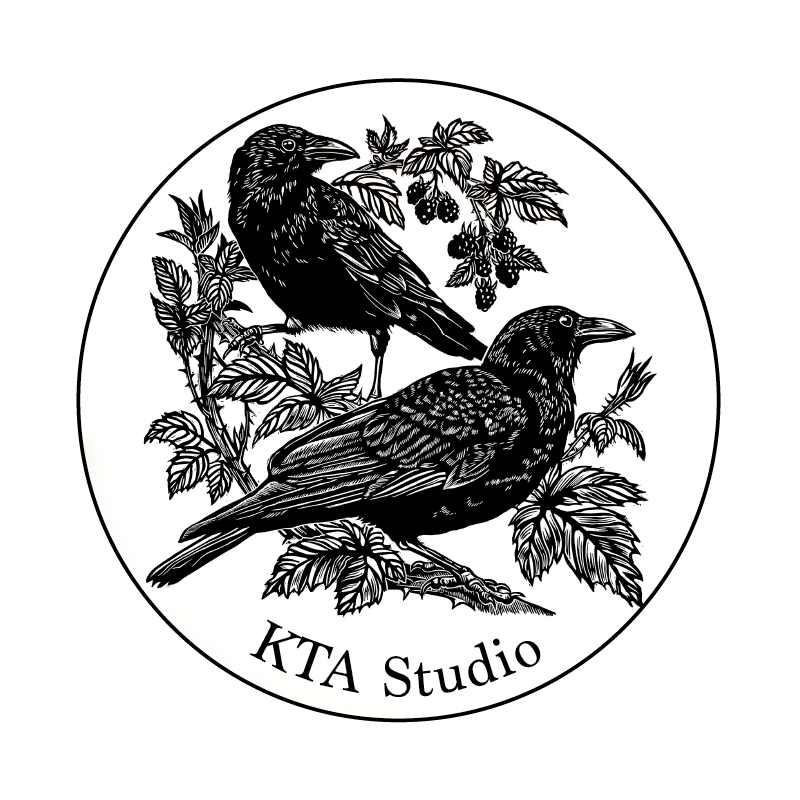






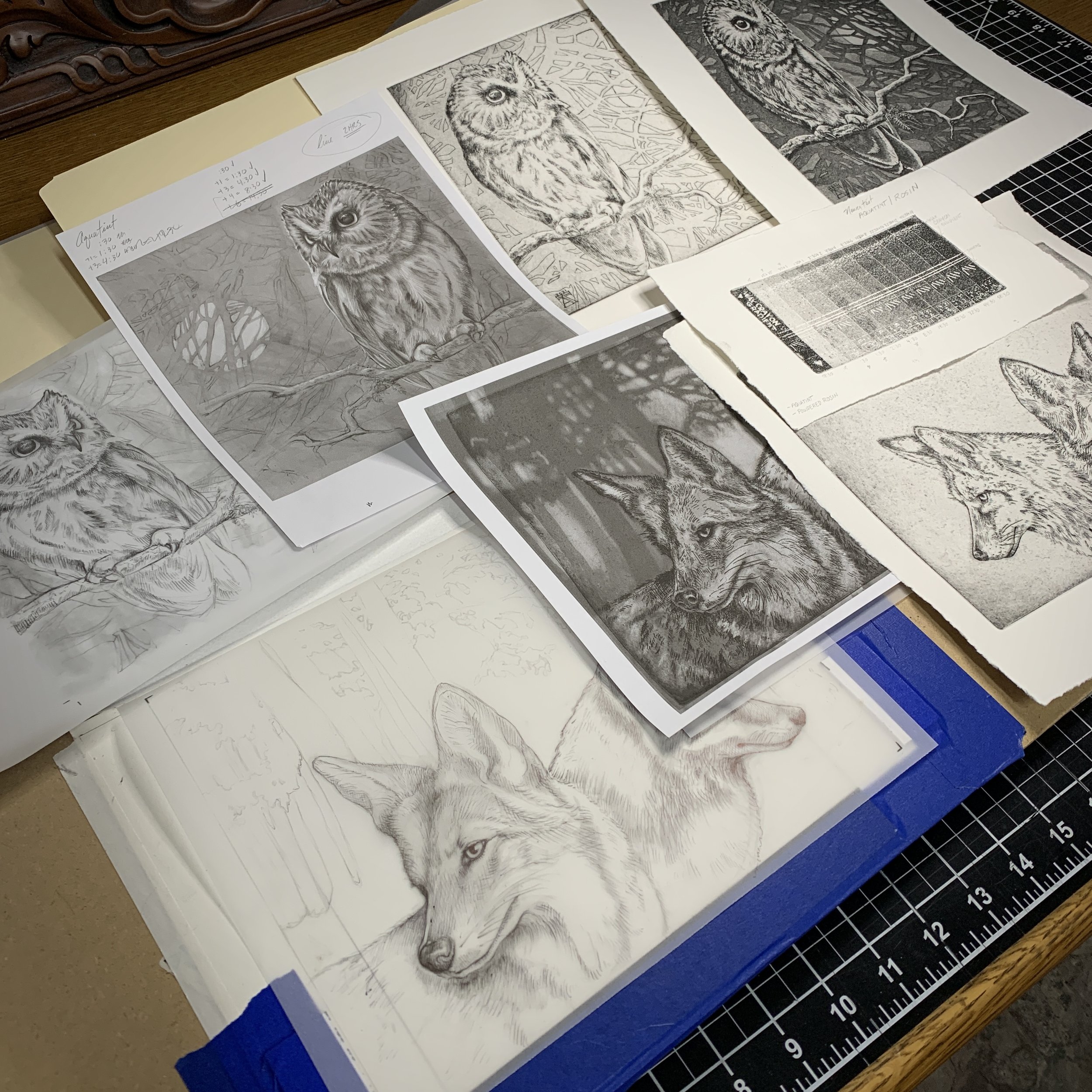
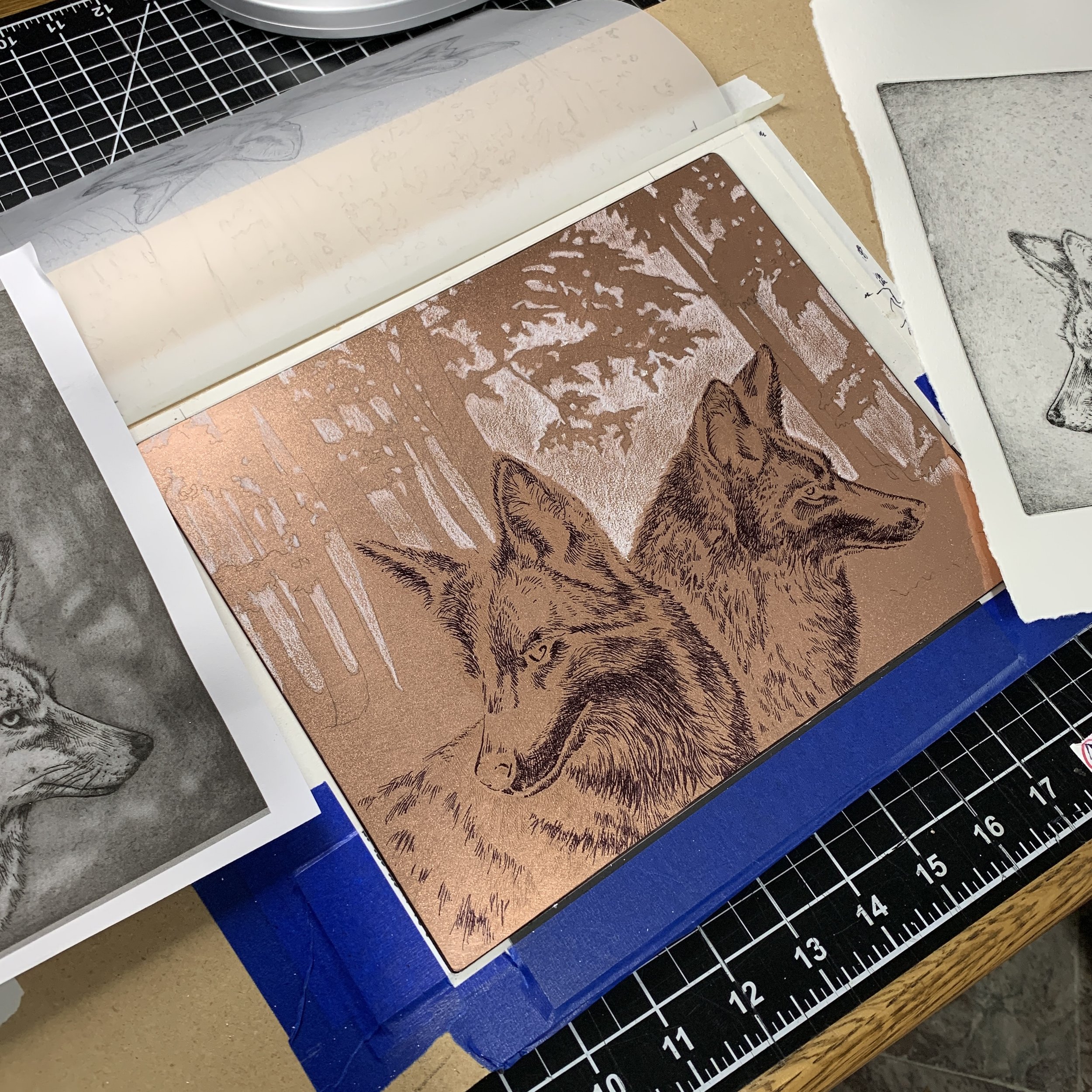
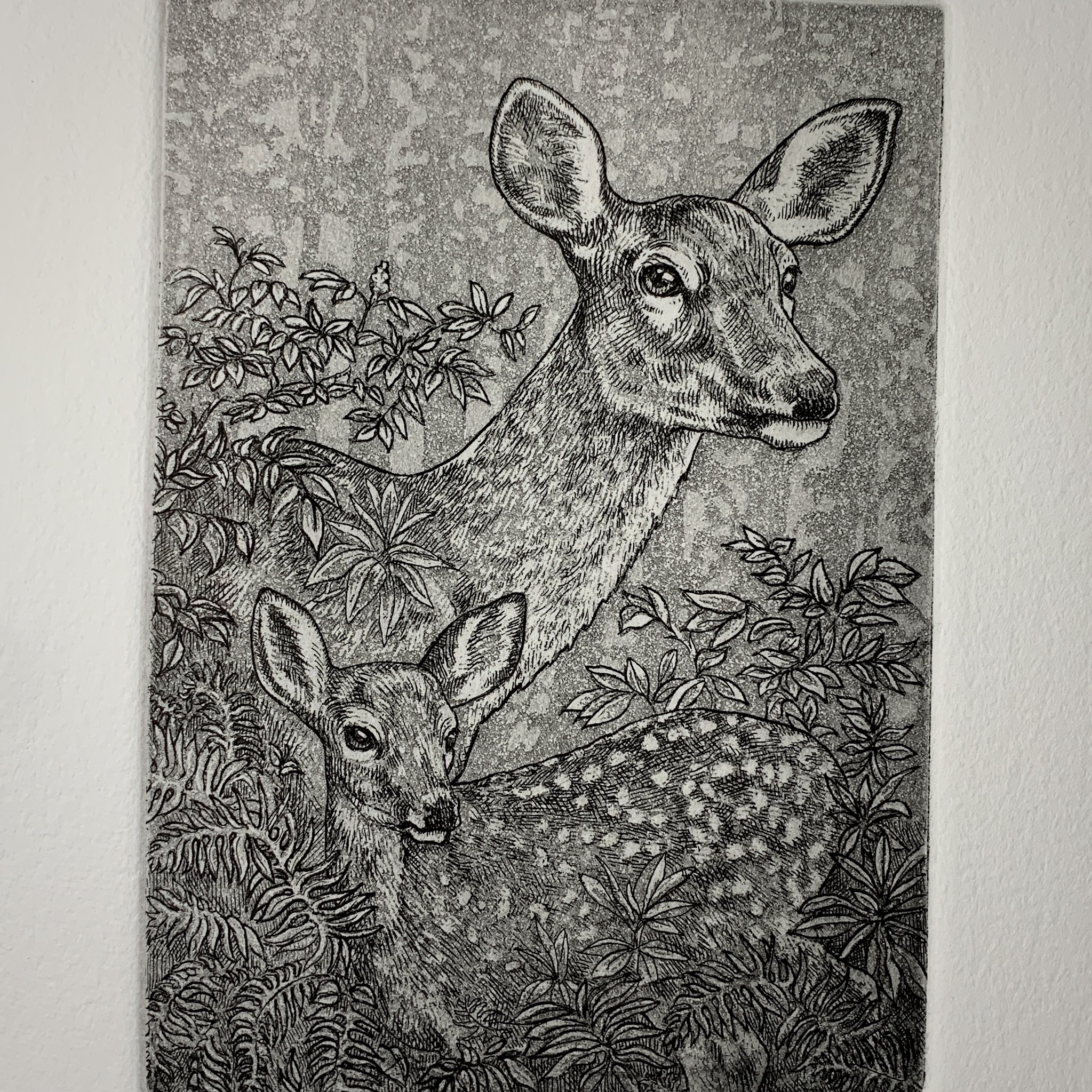










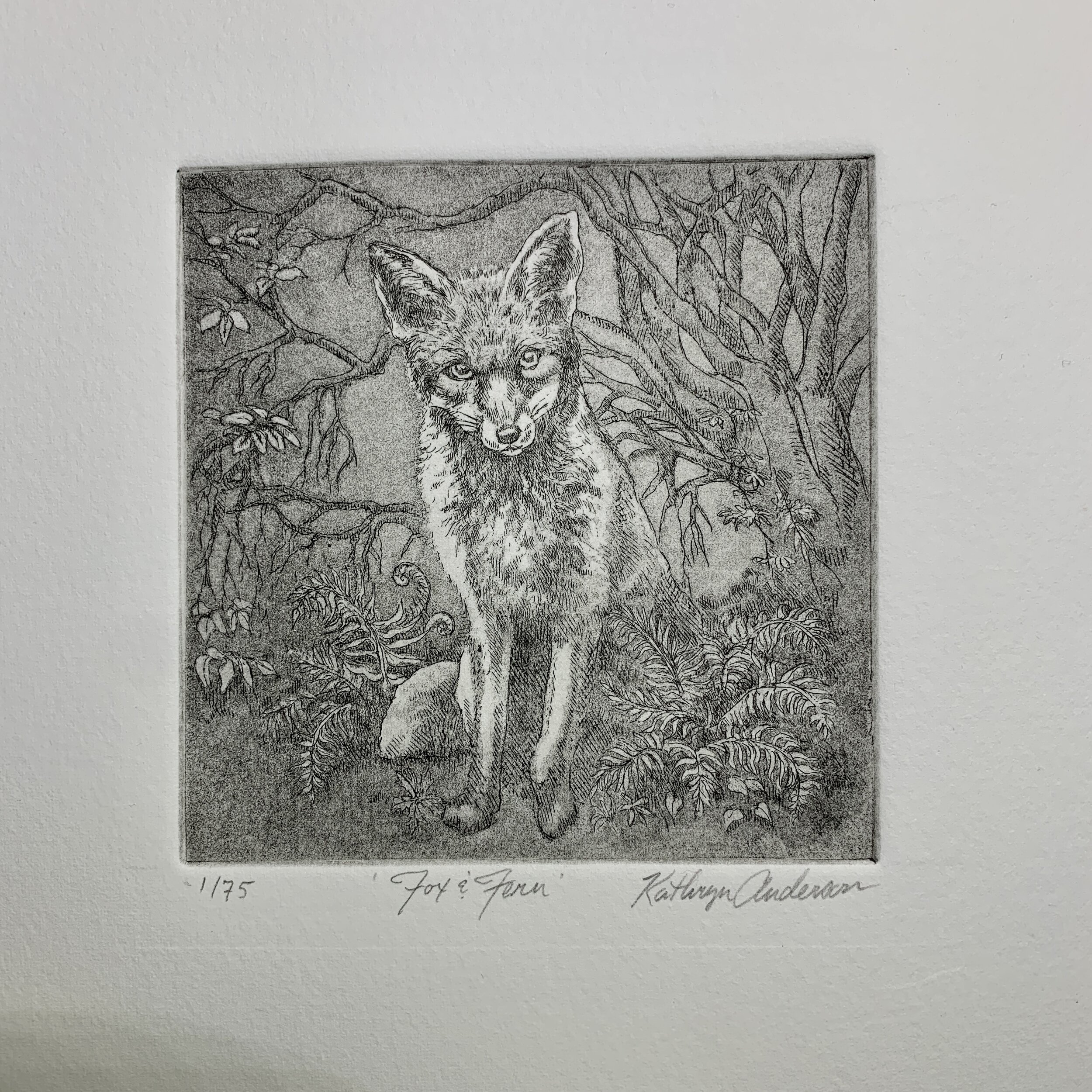

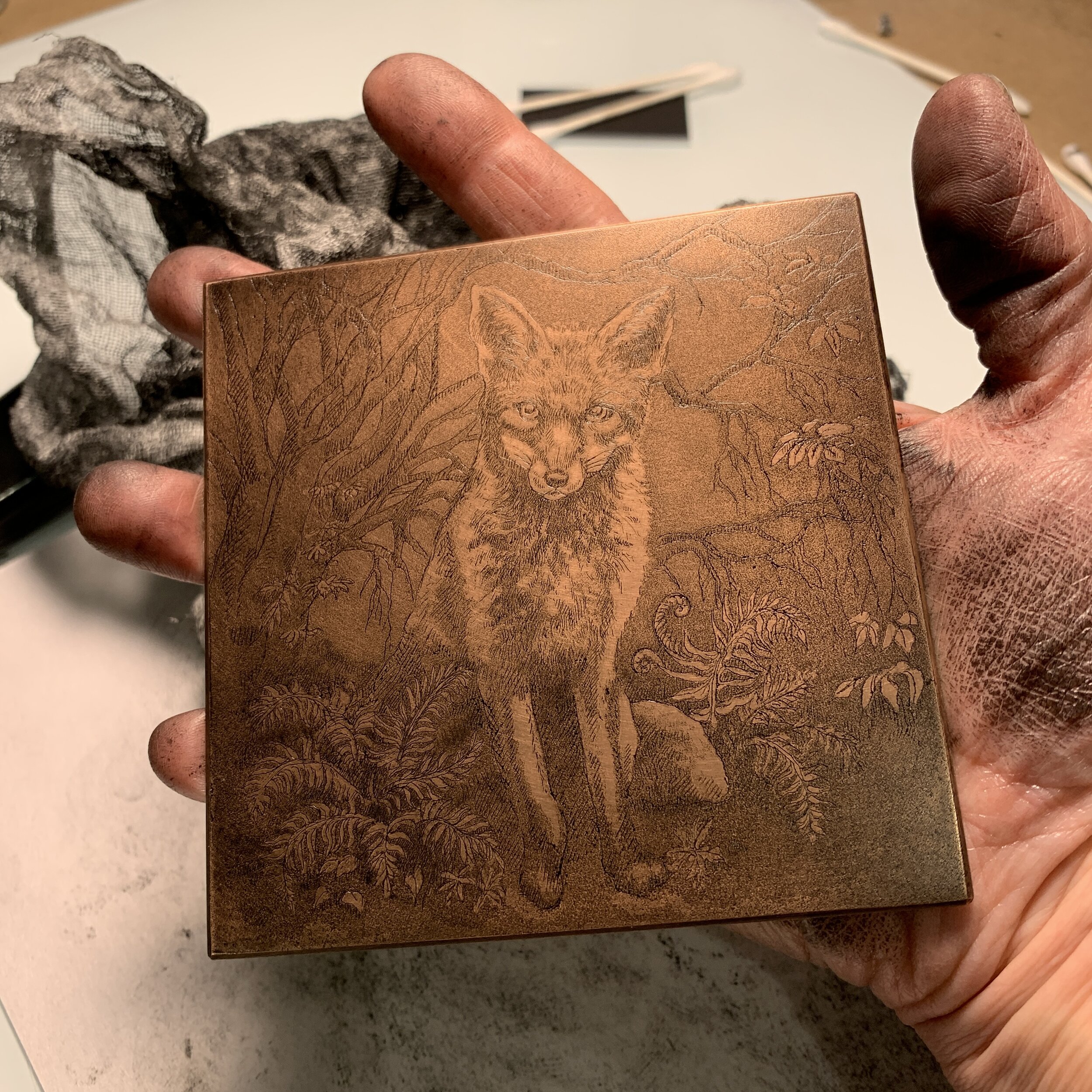







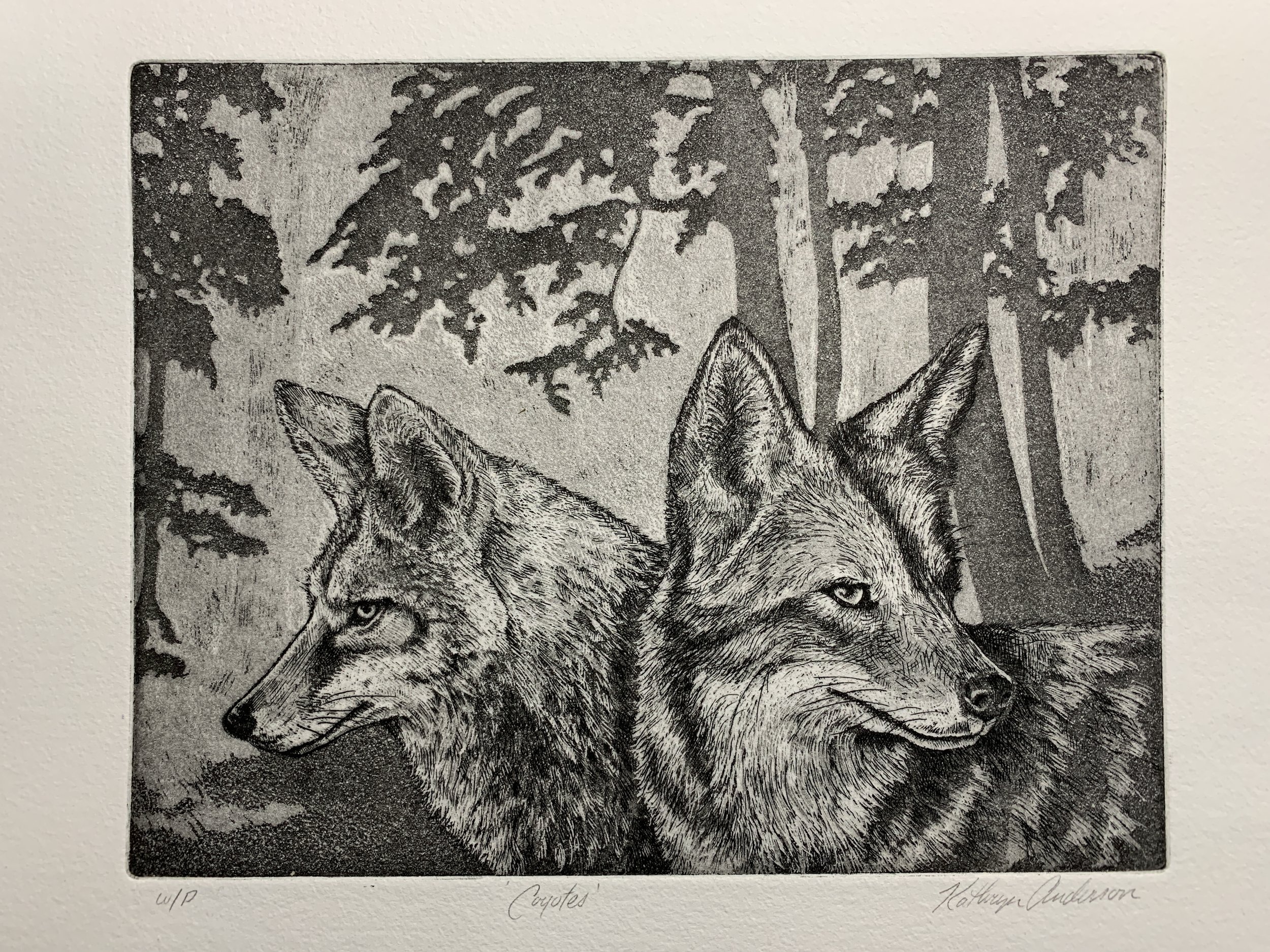

ETCHING (Intaglio)
Etching is a printmaking technique that uses chemical action to produce incised lines in a metal printing plate which then hold the applied ink and form the image.
The plate, traditionally copper, is prepared with an acid-resistant ground. Lines are drawn through the ground, exposing the metal. The plate is then immersed in Ferric Chloride and the exposed metal is ‘bitten’, producing incised lines. Stronger solution and longer exposure produce more deeply bitten lines. The resist is removed and ink applied to the sunken lines, but wiped from the surface. The plate is then placed against paper and passed through a printing press with great pressure to transfer the ink from the recessed lines. Sometimes ink may be left on the plate surface to provide a background tone.
Etching was used for decorating metal from the fourteenth century, but was probably not used for printmaking much before the early sixteenth century. Since then many etching techniques have been developed, which are often used in conjunction with each other:
Drypoint involves scribing lines directly into the plate with a diamond-pointed needle. This technique creates raised burrs which print as sharp lines with fuzzy, velvety edges.
Aquatint is a variant of etching that produces areas of tone rather than lines. Fine particles of acid-resistant material, such as powdered rosin, are attached to a printing plate by heating. The plate is then immersed in an acid bath, just like etching. The acid eats into the metal around the particles to produce a granular pattern of tiny indented rings. These hold sufficient ink to give the effect of an area of wash when inked and printed. The extent of the printed areas can be controlled by varnishing those parts of the plate to appear white in the final design. Gradations of tone can be achieved by varying the length of time in the acid bath; longer periods produce more deeply-bitten rings, which print darker areas of tone. The technique was developed in France in the 1760s, and became popular in Britain in the late eighteenth and early nineteenth centuries.
Mezzotint is an engraving technique developed in the seventeenth century which allows for the creation of prints with soft gradations of tone and rich and velvety blacks. The process involves indenting the metal printing plate by rocking a toothed metal tool across the surface. Each pit holds ink, and if printed at this stage the image would be solid black. However the printmaker creates dark and light tones by gradually rubbing down or burnishing the rough surface to various degrees of smoothness to reduce the ink-holding capacity of areas of the plate.
Like engraving, etching is an intaglio technique. Intaglio refers to all printing and printmaking techniques that involve making indents or incisions into a plate or print surface which hold the ink when ink is applied to the surface and then wiped clean.
